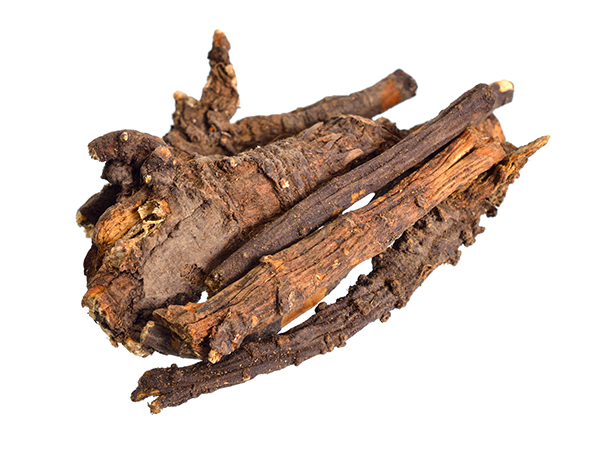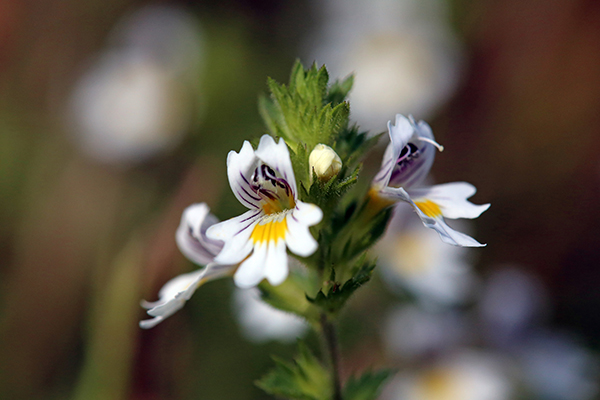Osha Root Tea: Benefits, Side Effects, and How to Make It
Osha root tea is a natural remedy with numerous health benefits.
In this article, we will explore its taste, benefits, potential side effects, and even provide a recipe for making it at home.
Let’s dive in!

What Is Osha Root Tea?
Osha root tea is an herbal beverage made from the dried roots of the Ligusticum porteri plant, commonly known as Osha. This plant is native to the Rocky Mountains of North America and has been used by Native American tribes for centuries as a natural remedy for various ailments.
The tea is often consumed for its perceived respiratory and immune-boosting properties, among other benefits. However, there’s not enough research currently to back the benefits of osha root for respiratory issues.
What Does Osha Root Tea Taste Like?
Osha root tea has a unique flavor profile that can be described as earthy, slightly bitter, and mildly sweet with a hint of spiciness. Its taste may be reminiscent of licorice or celery root. The tea’s aroma is also quite potent, with a strong, camphor-like scent.
Osha Root Tea Benefits
Osha root tea offers a range of health benefits, including:
- Anti-inflammatory properties: Osha root tea contains compounds that can help reduce inflammation in the body, which may be beneficial for those with conditions such as arthritis or chronic pain (1, 2, 3, 4).
- Antiviral and antibacterial properties: Osha root tea has been found to have antiviral and antibacterial properties, making it a useful natural remedy for fighting off infections (5, 6, 7).
- Respiratory support: Osha root is believed to help alleviate respiratory ailments, soothe sore throats, and address lung diseases. However, it’s important to note that no scientific studies are currently available to substantiate these claims.
- Immune-boosting properties: Osha root tea is known for stimulating the immune system, helping the body fight off infections and stay healthy.
- Digestive aid: Osha root tea can help alleviate indigestion, bloating, and other digestive issues by promoting the production of digestive enzymes and reducing inflammation in the gut.
Osha Root Tea Side Effects
Osha root tea should be avoided during pregnancy, as it may start menstruation, and this might cause a miscarriage. It is also not recommended for breastfeeding mothers, as its safety during lactation has not been established.
Owing to the limited human research conducted, other side effects of osha root remain largely undetermined.
What Is the Best Way to Use Osha Root?
The best way to use osha root depends on the individual and their desired health benefits. Osha root tea is a popular choice for respiratory and immune support, while osha root tinctures or capsules may be more suitable for those looking for anti-inflammatory or digestive benefits.
How to Make Osha Root Tea
To make osha root tea, follow these steps:
- Gather your ingredients: You will need 1 tablespoon of dried osha root, 2 cups of water, and an optional sweetener such as honey or stevia.
- Prepare the osha root: Crush or grind the dried osha root to increase the surface area and release more of the beneficial compounds.
- Heat the water: Bring the 2 cups of water to a boil in a saucepan.
- Add the osha root: Add the crushed osha root to the saucepan once the water is boiling.
- Simmer the tea: Reduce the heat to a low simmer, and let the osha root steep for 20-30 minutes.
- Strain the tea: After steeping, strain the tea through a fine mesh strainer or cheesecloth to remove the osha root particles.
- Sweeten to taste: If desired, add honey or stevia to taste for a touch of sweetness.
- Serve: Pour the osha root tea into a cup and enjoy! The tea can be served hot or chilled, depending on your preference.
Final Thoughts
Osha root tea is a versatile natural remedy that has been used for centuries to support respiratory, immune, and digestive health. While it is generally considered safe, it’s essential to be aware of potential side effects and consult your healthcare provider before using osha root tea, especially if you are pregnant, breastfeeding, or taking prescription medications.
FAQ
Is Osha Root Good for Your Lungs?
Osha root is known for its respiratory support properties. It has long been used to thin mucus, reduce inflammation in the airways, and alleviate symptoms associated with coughs, colds, and bronchitis. However, these perceived benefits have not been proven by research yet.
Is Osha Root Safe to Smoke?
While osha root is traditionally used in teas, tinctures, or capsules, some individuals may choose to smoke it for respiratory relief. However, smoking any herbal product may introduce additional risks, such as lung irritation or damage. Sticking to teas or other forms of ingestion is recommended as a safer alternative.
Is Osha Root a Drug?
Osha root is not considered a drug in the conventional sense. It is a natural plant that has been used traditionally for medicinal purposes. However, it’s essential to treat it with caution and respect, like any herbal supplement, and consult your healthcare provider before using it, especially if you are taking prescription medications.
How Much Osha Tea Should I Drink, and How Often?
Since there is a lack of human research, determining an effective and safe amount of osha root tea that you can drink daily is challenging. If you’re considering incorporating osha root tea into your regular routine, consult your healthcare provider first.
Additionally, it’s essential to adhere to the recommendations on the product label to ensure safe consumption.






